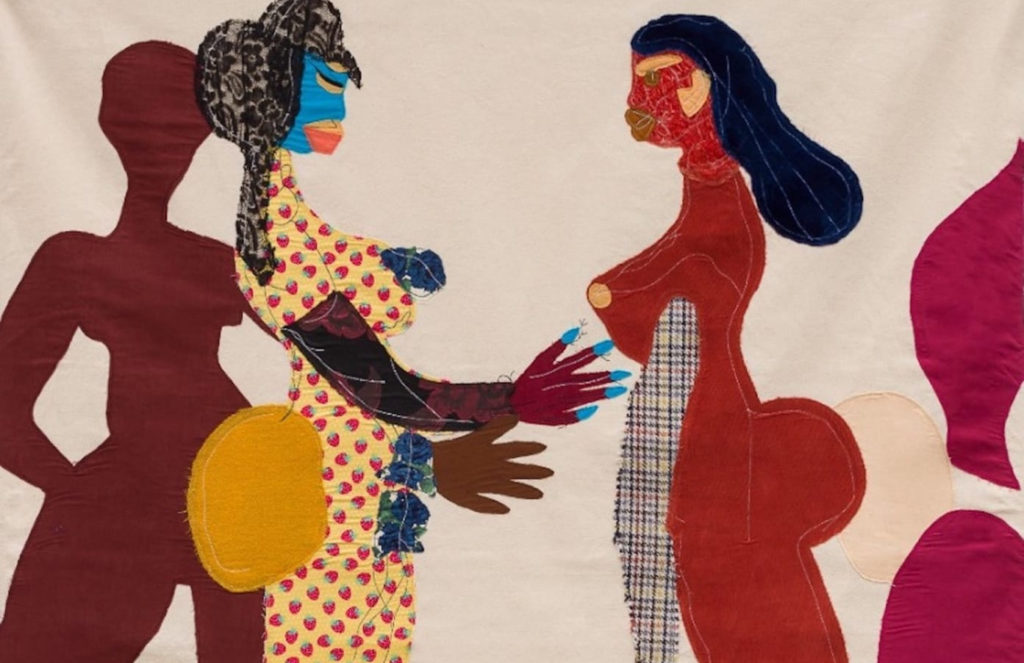A Brief History of Feminist Art
Feminist art developed simultaneously with the feminist movement. Its origins can be traced back to the 1960s and the 2nd wave of feminism. Feminist art was inspired by the works of proto-feminist artists like Eva Hesse and Louise Bourgeois, whose pieces focused on topics of domesticity, the female body and the life of women. Feminist artists aimed to rewrite male-dominated art history and the tradition of seeing women as objects for male pleasure. Battle for gender equality and equal opportunities, led by the feminist art movement helped female artists gain grander recognition, in a male-dominated world of art.

The Early Days of Feminist Art
In the past, if a woman wanted to be taken seriously as an artist, she had to de-gender her work. If an artwork appeared to be made by a woman, it would be immediately considered less worthy than the work of her male counterpart. Therefore, women aimed to make their artworks gender-neutral, avoiding topics and themes specifically connected to womanhood.
However, feminist art embraced feminine topics, as well as, art genres typically associated with women (for example, textile). Yayoi Kusama’s Oven-Pan is considered a pivotal work in that sense, as it depicted a specifically feminine object in a specific, feminine manner, with bright colours and soft materials. American artist Judy Chicago, adopted a similar concept in her work, The Dinner Party, which depicted a dinner table transformed into an equilateral triangle.

The 1970s and the Rise of Feminist Photography, Video, Performance and Body Art
In the 1970s women artists begun to establish their own spaces where they could work independently from men. They created women’s art organizations like Art Workers Coalition, Women Artists in Revolution and others, that demanded more representation for women in galleries and museums. American feminist artists organized protests in front of famous New York museums such as Whitney and The Museum of Modern Art, demanding and eventually succeeding in raising the percentage of women artists in the museum collections. Simultaneously, many art critics contributed to the art movement by writing essays that focused on the underrepresentation of women in the art sector.
One such pioneering essay “Why Have There Been No Great Women Artists?” by Linda Nochlin, showed how various social conditions prevented female artists from reaching the fame and the glory of their equally talented male colleagues. Together with art historian, Ann Sutherland Harris, Linda Nochlin prepared “Women Artists: 1550-1950” an exhibition of works made by female artists of the era.
Check our upcoming events selected for you:
The decade also witnessed the rise of photography, video and performance art as mediums for creating feminists pieces. These art genres were widely accepted by the feminist movement, as they represented an affordable way of making art and (unlike sculpting and painting) didn’t have a long male-dominated history. Artists like Judith Black and Hannah Wilke photographed their own body to show the difference between idealized female figures that dominated the art world at the time, and the “real female body†with all its flaws and marks.
Performance artists like Marina Abramovic used their body as both the object and the subject for their pieces. Performance and body art, worked on a highly personal level as they were created interactively, face-to-face with viewers, therefore leaving a more potent and lasting impression.

The Postmodern Feminist Art of the 1980s
During the era of Regains in the 1980s America, feminist artists draw their inspiration from psychoanalysis and postmodern theory. The newly opened Met gallery that featured only 13 women out of 169 artists, inspired the creation of the Guerrilla Girls, a movement that demanded more space for women artists in museums. The group wore gorilla costumes, to hide their identity and avoid consequences for speaking against powerful institutions.
They employed a very assertive activist tactic and organized protests, talks, interventions, and most famously, displaying tongue-in-cheek posters on rented billboards all over the US. One of their most famous posters features a reinterpretation of a famous nude La Grande Baigneuse, with the text “Do women have to be naked to get into the Met Museum? Less than 5% of the artists in the Modern Art Sections are women, but 85% of the nudes are female“. The tactics of employing posters, billboards, catchy slogans and other advertising techniques to reach a wider audience were later adopted by other feminist artists including Barbara Kruger and Jenny Holzer.
In the 1990s contemporary artists such as Tracy Emin and Cindy Sherman continued to develop and raise feminist art to new heights. British artist Tracy Emin, for instance, was widely celebrated for her, Turner prize-nominated masterpiece My bed. The art piece featuring a bed covered with dirty sheets, condoms, blood-stained clothes and other items portraying depression, is valued not only for its grand emotional effect, but also for the innovative use of materials. American artist Cindy Sherman, on the other hand, photographed herself in stereotypical female poses often seen in film and history, to uncover and condemn the male gaze so prevalent in these areas.
Looking for a More In-depth History of Feminist Art? Join our Online Lecture!
In the 21st century, feminist art seems to be more important than ever. As the art world becomes more diverse and inclusive, a new generation of female artists arises ready to tackle both old and new issues and stereotypes. Over time, feminist artists have changed and broadened their areas of interest making feminist art more exciting and fascinating than ever. Join our art lecture about Feminist art on June 24th, 6.30 pm (BST), and discover how a younger generation of feminist artists is using art to explore the notions of race, class, privilege and gender identity. Our expert speaker Bojana Popovic, will guide you through the finest art pieces made by the most influential feminist artists of today such as Barbara Kruger, Tschabalala Self and Njideka Akunyili Crosby.

Leave a Reply